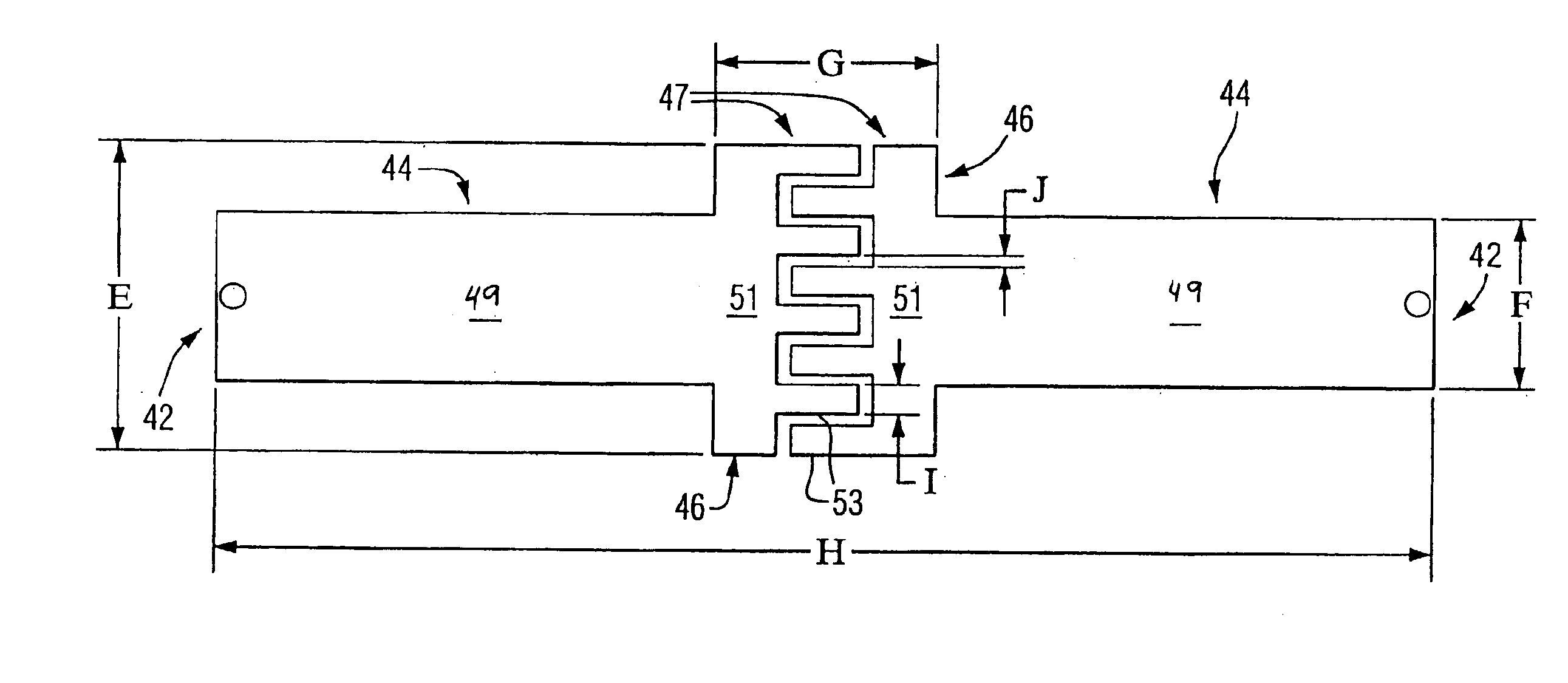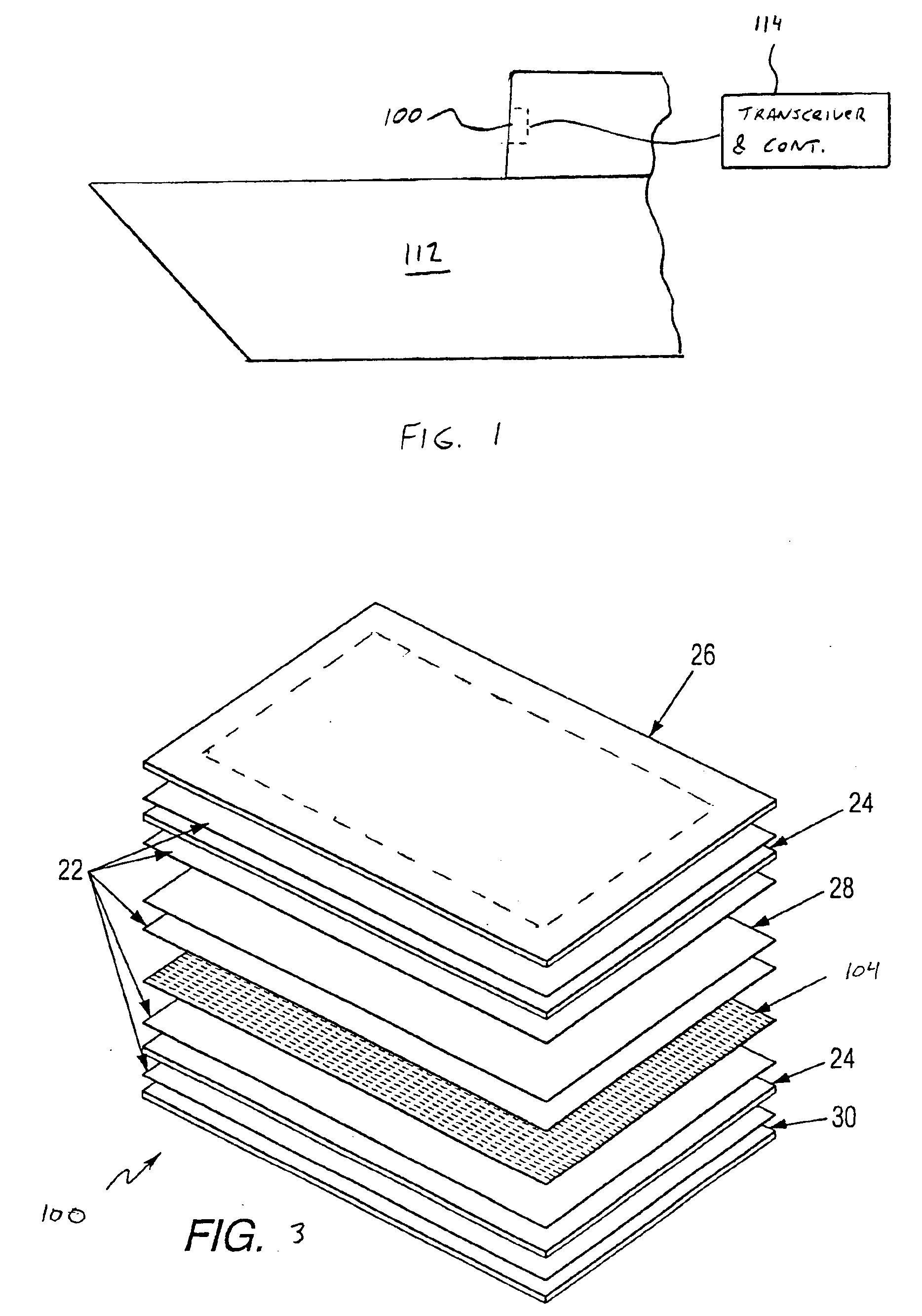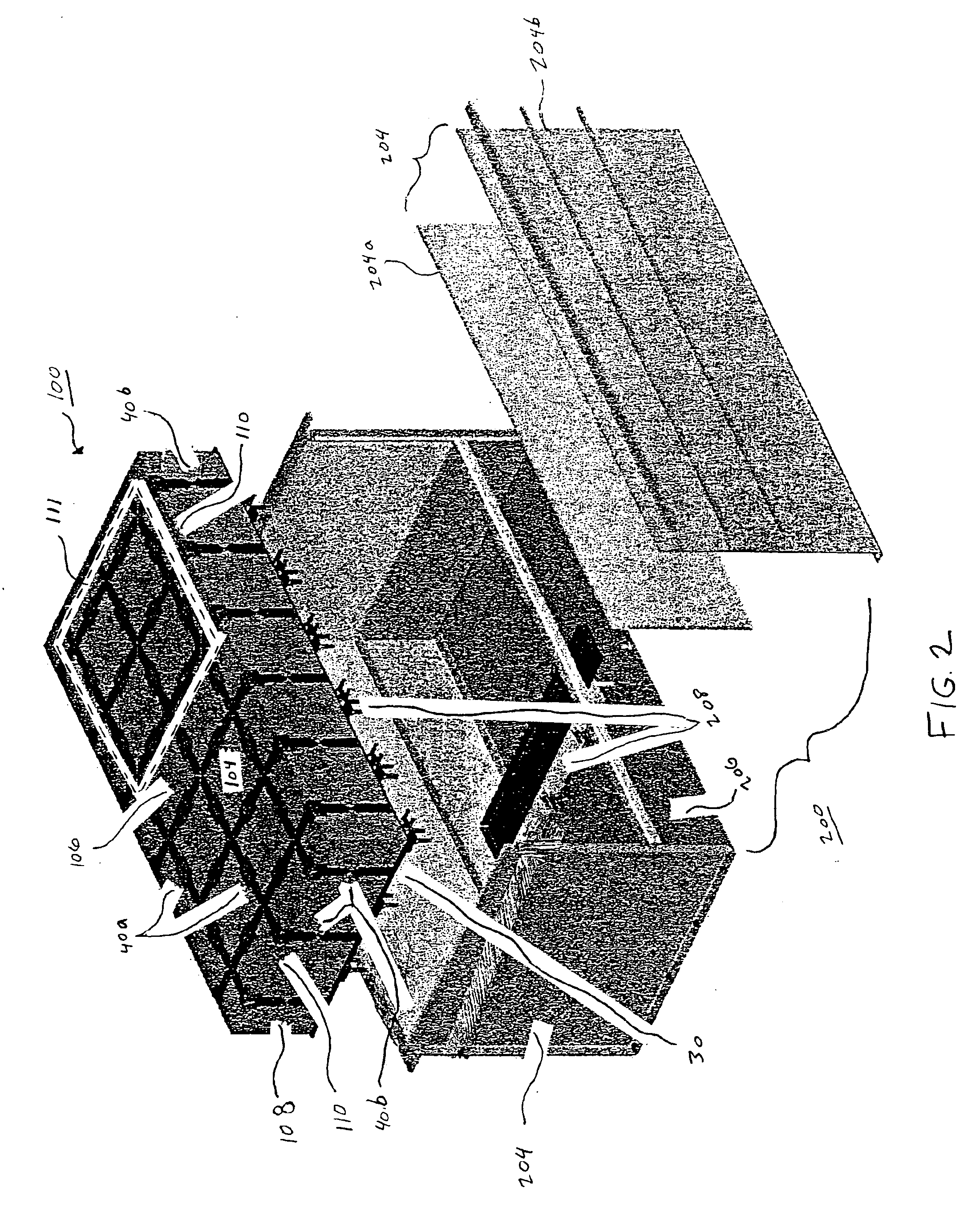Phased array antenna with edge elements and associated methods
a phased array and edge element technology, applied in the field of communication, can solve the problems of limiting the bandwidth and directivity capabilities of such antennas, affecting the performance of the array of dipole antenna elements, and affecting the performance of the array, so as to increase the capacitive coupling therebetween, and increase the capacitive coupling
- Summary
- Abstract
- Description
- Claims
- Application Information
AI Technical Summary
Benefits of technology
Problems solved by technology
Method used
Image
Examples
Embodiment Construction
WR versus frequency for an active dipole antenna element in the center of the phased array antenna of FIG. 2 with the edge elements in place, and for the same dipole antenna element without the edge elements in place.
[0033]FIG. 9 is a schematic diagram of a dipole antenna element having a switch and a load connected thereto so that the element selectively functions as an absorber in accordance with the present invention.
[0034]FIG. 10 is a cross-sectional diagram of a phased array antenna that includes the dipole antenna elements of FIG. 9.
[0035]FIG. 11 is top plan view of a building partly in sectional illustrating a feedthrough lens antenna in accordance with the present invention positioned in a wall of the building.
DETAILED DESCRIPTION OF THE PREFERRED EMBODIMENTS
[0036]The present invention will now be described more fully hereinafter with reference to the accompanying drawings, in which preferred embodiments of the invention are shown. This invention may, however, be embodied in...
PUM
 Login to View More
Login to View More Abstract
Description
Claims
Application Information
 Login to View More
Login to View More - R&D
- Intellectual Property
- Life Sciences
- Materials
- Tech Scout
- Unparalleled Data Quality
- Higher Quality Content
- 60% Fewer Hallucinations
Browse by: Latest US Patents, China's latest patents, Technical Efficacy Thesaurus, Application Domain, Technology Topic, Popular Technical Reports.
© 2025 PatSnap. All rights reserved.Legal|Privacy policy|Modern Slavery Act Transparency Statement|Sitemap|About US| Contact US: help@patsnap.com



